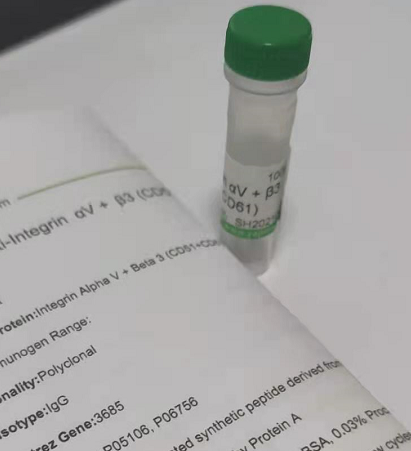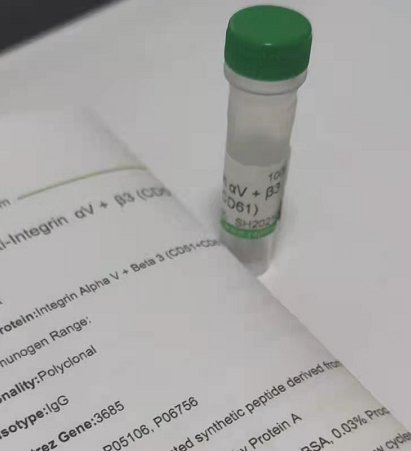| 產(chǎn)品編號(hào) | Ys-5702R |
| 英文名稱 | phospho-SCNN1B (Ser633) |
| 中文名稱 | 磷酸化上皮鈉通β抗體 |
| 別 名 | SCNN1B(phospho S633); Amiloride sensitive sodium channel subunit beta; Beta NaCH; ENaC beta; ENaCB; Epithelial Na(+) channel subunit beta; Epithelial Na+ channel beta subunit; Epithelial Na+ channel subunit beta; Epithelial sodium channel beta 2 subunit; Epithelial sodium channel beta 3 subunit; Nonvoltage gated sodium channel 1 beta subunit; Nonvoltage gated sodium channel 1 subunit beta; SCNEB; SCNN 1B; SCNNB_HUMAN; Sodium channel nonvoltage gated 1 beta (Liddle syndrome); Sodium channel nonvoltage gated 1 beta; SCNNB_HUMAN. |
| 抗體來(lái)源 | Rabbit |
| 克隆類型 | Polyclonal |
| 交叉反應(yīng) | Human, Mouse, Guinea Pig, (predicted: Rat, Dog, Pig, Cow, ) |
| 產(chǎn)品應(yīng)用 | WB=1:500-2000 ELISA=1:5000-10000 not yet tested in other applications. optimal dilutions/concentrations should be determined by the end user. |
| 理論分子量 | 73kDa |
| 細(xì)胞定位 | 細(xì)胞膜 |
| 性 狀 | Liquid |
| 濃 度 | 1mg/ml |
| 免 疫 原 | KLH conjugated Synthesised phosphopeptide derived from human SCNN1B around the phosphorylation site of Ser633: IE(p-S)D |
| 亞 型 | IgG |
| 純化方法 | affinity purified by Protein A |
| 緩 沖 液 | 0.01M TBS(pH7.4) with 1% BSA, 0.03% Proclin300 and 50% Glycerol. |
| 保存條件 | Shipped at 4℃. Store at -20 °C for one year. Avoid repeated freeze/thaw cycles. |
| 注意事項(xiàng) | This product as supplied is intended for research use only, not for use in human, therapeutic or diagnostic applications. |
| PubMed | PubMed |
| 產(chǎn)品介紹 | SCNN1B is a subunit of the epithelial sodium channel, ENaC. ENac has high sodium selectivity, low conductance, and amiloride sensitivity. The functional channel of ENaC is composed of at least 3 subunits, alpha (SCNN1A), beta (SCNN1B), and gamma (SCNN1G). The 3 subunits show sequence similarities to one another, indicating descent from a common ancestral gene. Each encodes a protein containing 2 transmembrane domains, with intracellular amino and carboxyl termini. Function: Sodium permeable non-voltage-sensitive ion channel inhibited by the diuretic amiloride. Mediates the electrodiffusion of the luminal sodium (and water, which follows osmotically) through the apical membrane of epithelial cells. Controls the reabsorption of sodium in kidney, colon, lung and sweat glands. Also plays a role in taste perception. Subunit: Probable heterotrimer containing one alpha, one beta and one gamma subunit. A delta subunit can replace the alpha subunit. Interacts with the WW domains of NEDD4, NEDD4L, WWP1 and WWP2. Interacts with the full length immature form of PCSK9 (pro-PCSK9). Subcellular Location: Apical cell membrane; Multi-pass membrane protein. Note=Apical membrane of epithelial cells. Post-translational modifications: Phosphorylated on serine and threonine residues (By similarity). DISEASE: Pseudohypoaldosteronism 1, autosomal recessive (PHA1B) [MIM:264350]: A rare salt wasting disease resulting from target organ unresponsiveness to mineralocorticoids. PHA1B is a severe form involving multiple organ systems, and characterized by an often fulminant presentation in the neonatal period with dehydration, hyponatremia, hyperkalemia, metabolic acidosis, failure to thrive and weight loss. Note=The disease is caused by mutations affecting the gene represented in this entry. The degree of channel function impairment differentially affects the renin-aldosterone system and urinary Na/K ratios, resulting in distinct genotype-phenotype relationships in PHA1 patients. Loss-of-function mutations are associated with a severe clinical course and age-dependent hyperactivation of the renin-aldosterone system. This feature is not observed in patients with missense mutations that reduce but do not eliminate channel function. Markedly reduced channel activity results in impaired linear growth and delayed puberty (PubMed:18634878). Liddle syndrome (LIDDS) [MIM:177200]: Autosomal dominant disorder characterized by pseudoaldosteronism and hypertension associated with hypokalemic alkalosis. The disease is caused by constitutive activation of the renal epithelial sodium channel. Note=The disease is caused by mutations affecting the gene represented in this entry. Bronchiectasis with or without elevated sweat chloride 1 (BESC1) [MIM:211400]: A debilitating respiratory disease characterized by chronic, abnormal dilatation of the bronchi and other cystic fibrosis-like symptoms in the absence of known causes of bronchiectasis (cystic fibrosis, autoimmune diseases, ciliary dyskinesia, common variable immunodeficiency, foreign body obstruction). Clinical features include sub-normal lung function, sinopulmonary infections, chronic productive cough, excessive sputum production, and elevated sweat chloride in some cases. Note=The disease is caused by mutations affecting the gene represented in this entry. Similarity: Belongs to the amiloride-sensitive sodium channel (TC 1.A.6) family. SCNN1B subfamily. SWISS: P51168 Gene ID: 6338 |
我要詢價(jià)
*聯(lián)系方式:
(可以是QQ、MSN、電子郵箱、電話等,您的聯(lián)系方式不會(huì)被公開)
*內(nèi)容:









